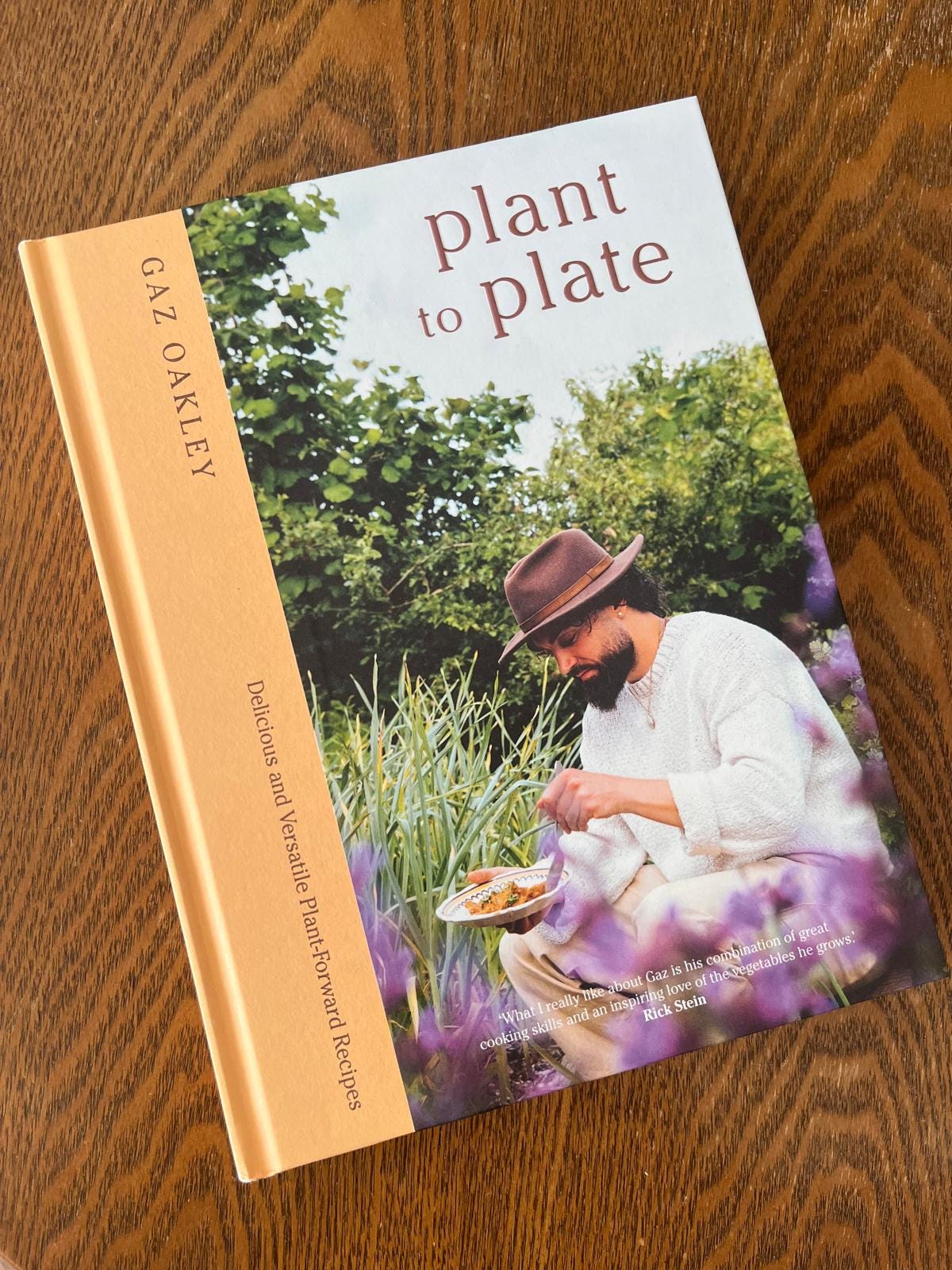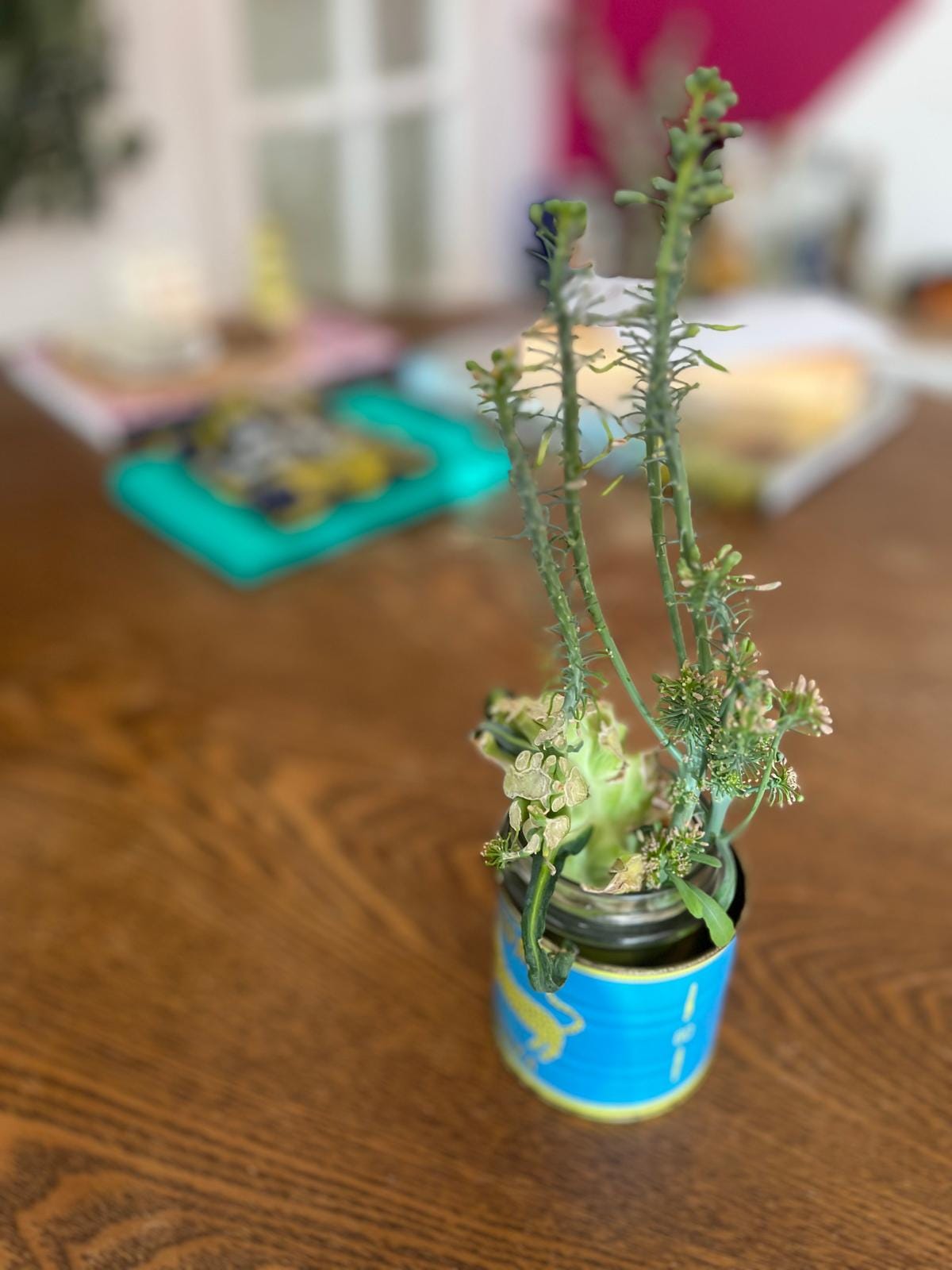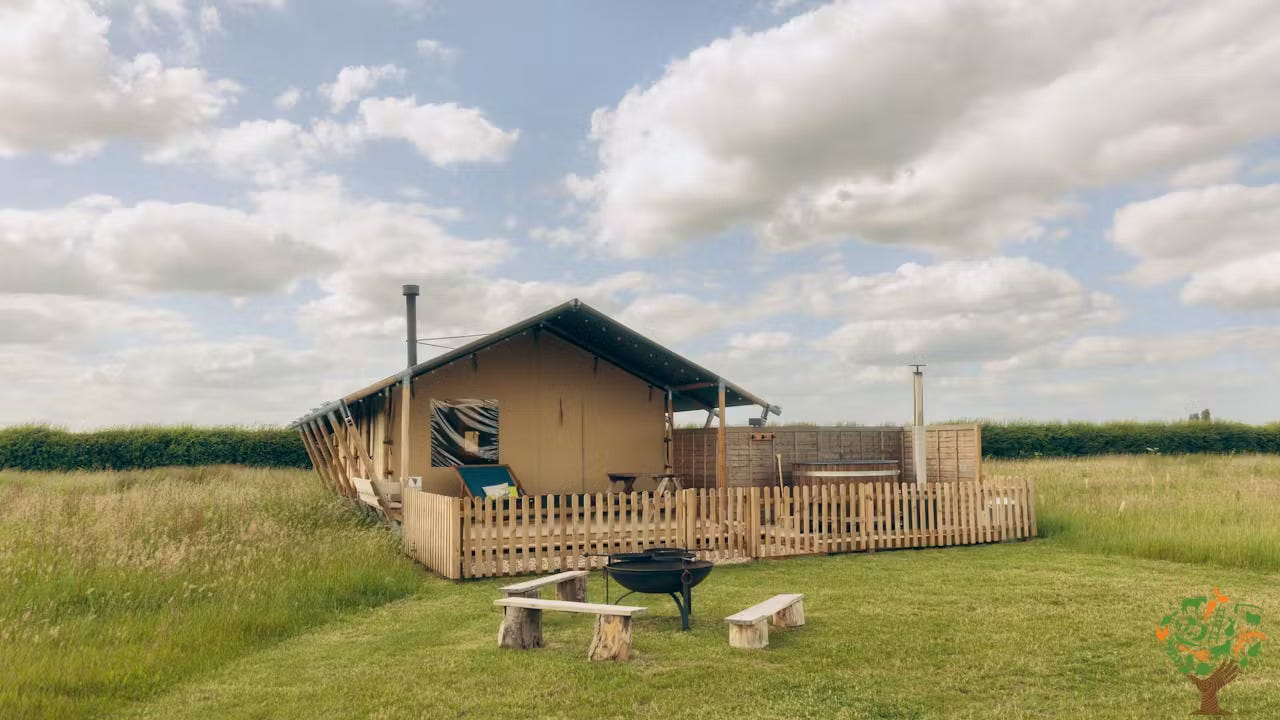One seed, one sprout, one stubborn little green thing, defies supply chains and supermarket shelves. Your dinner becomes a protest, your plate, a poem.
Growing your own veg is an act of resistance, self-reliance, care, nourishment, hope, climate action, or even quiet rebellion, depending on your perspective.
...resistance — against industrial agriculture, food waste, and supply chain fragility.
...self-reliance — a way to reclaim agency in a system that profits from dependence.
...care — for your body, your soil, your community.
...hope — in the face of ecological uncertainty.
...reconnection — with the land, the seasons, and the natural pace of life.
...abundance — reminding us how much can grow from so little.
...defiance — of fast food culture, plastic packaging, and bland, shipped-in produce.
Over the last few years, it feels like everyone, at least on the social media platforms I browse, is attempting to ‘grow their own’. It can hardly be called a trend, when it’s obviously something that’s been around since the dawn of humans.
But as we move towards ever-more processed foods, a world where people are fighting over pointless creepy dolls and queuing overnight to visit a new IKEA store, quietly growing your own veg seems like a calming response to a world gone crazy.
But if, like me, you live in a flat which never gets enough sunlight, never mind not having room for one of those space-age planters, then growing your own at scale is a daunting, seemingly impossible task.
Someone peered into our lounge the other day…
But the thing is, dear reader, there are some simple little things you can do to stick two fingers up to the supermarkets which control the prices, and city planners who prefer concrete monstrosities over natural spaces. More on that later, but first, let’s rewind to my idyllic, bucolic childhood.
(There’s no) Rustic romance
Ah, the sweet scenes portrayed on social media, as gentle people show us how they turned their vast acreage into a pastoral paradise, heaving with produce! The reality is that it’s bloody hard work, fraught with your lovingly planted crops dying, getting attacked by frost or other weather, or being eaten by hungry wee beasties.
I’d like to say my childhood was a veg-growing paradise, but it wasn’t. My parents were lucky enough to have a big back garden, about the size of a small football field, including a big patch where they decided it would be good to grow their own veg. Possibly inspired by the TV show ‘The Good Life’ (it was 1970s Britain), my dad had my brother and me working hard every almost every weekend in season, digging, planting, weeding, pruning and generally scrabbling around in the dirt, when all I really wanted was to get out on my bike, or carry on with my latest Lego, Meccano or drawing project.
I mostly hated it. At the time, I didn’t realise the joy of eating a homegrown greenhouse tomato, or a lovingly-nurtured carrot or potato. Now, I yearn not only for the space to grow but also the taste – and, of course, everything was naturally organic.
After a few years of the effort involved in growing enough food to feed an army (and we used to give a lot of produce away, left in a box by the front gate), my parents made the excellent decision to turn the veg patch into a lawn. Little did my brother and I realise we would then be employed for the next month in breaking down the soil and flattening the land ready for lawn seed. I’ll always remember, while my dad did borrow a roller from somewhere, we were asked to jump up and down all over the plot to help flatten it and break down lumps of soil.
If you’re enjoying reading this, why not buy me a virtual coffee, here? Your kindness allows me to buy seeds, plant them, and then watch them fail. Such is life…
Hardly traumatic memories I know, but it was certainly an early introduction to the pride and pitfalls of the grow your own movement.
Fast forward 40 years, and now I’m sitting in central London watching YouTube videos of people planting stuff, (is that irony, given my childhood?) and reading one of my chef heroes, Gaz Oakley’s, latest book, ‘Plant to Plate’, which describes his shift to a remote Welsh ‘homestead’, and the life-changing joy of growing your own.
A treasure trove of good stuff…
As the back-of-the-book blurb says: “Revealing the beauty of the passing seasons and the magic feeling that comes alongside harvesting and cooking your own food, Plant to Plate will inspire you to make the most of fresh produce and perhaps take inspiration for your very own homestead.”
Again, there’s that romanticisation of growing at home…your very own homestead? Not very inclusive, in my humble opinion!
It’s not that hard
But it’s not that hard to begin planting. At least, it needn’t be. You can start small. Like, very small, from leaving stuff in a jar to sprout overnight, to leaving your broccoli stalks in water and creating a flowering plant from it…and next time you buy any spring onions, keep one or two back and plant them, then you can snip off the green part as and when you need it. Supermarket growing herbs are another easy win, just replant them in bigger pots, stick them somewhere with good light, and use as needed.
This cant be eaten, but it’s on the way to flowering…
A friend of mine has just created an easy ‘home growing’ kit, based on funky looking planters and a seasonal home delivery of baby plants to stick in it. A great idea, but again, it’s designed to grow outdoors, and we don’t have any outdoor space included with our tiny flat. Still, you can support the idea via Kickstarter (in the UK) here.
Don’t go down the allotment route. You’ll probably have to wait 18 years for a plot, then excitedly buy all the tools you might need, and then, after a couple of exhausting weekends, realise it’s all a bit much.
An urban oasis - Foodscape vertical farm in Camden
I found the best possible solution to being a lazy urban tosser without a garden; I joined ‘Foodscape’ — a local vertical farm which grows veg on your behalf, in a hidden Camden square that can never, apparently, be built on. There’s also a bunch of home delivery services for organic veg, so check out your local services! For me, with very little effort, I’ve moved away from supermarket veg; and away from over reliance on tasteless plastic wrapped veg from the other side of the planet.
WWOOF woof
The allure of growing my own veg is deeply entrenched within me. And there are all sorts of ways you can get involved, from a practical, hands-on learning perspective. There’s a global movement called WWOOFing — World Wide Opportunities (or Willing Workers On) On Organic Farms — which allows you to go and stay on a farm/ homestead etc, and help on the farm, in return for free accommodation and callouses.
Someone cleverer than me commented that we are now in an age where we are paying to learn to do things as hobbies, when these things were a natural part of life for our grandparents. They said it better than I just did, actually, but you get the idea…and while WWOOFing isn’t for everyone, I do like the idea of re-learning what should come naturally to us all..
Head to Hempsall Farm
My friend Pippa runs what’s probably the UK’s only truly vegan glamping site - in amazing, gigantic African safari tents - and she uses the money from the glamping to care for a right old menagerie of rescued animals at her Cambridgeshire site. You can offer yourself up as a WWOOFer there, too.
I also recently discovered ‘Workaway’, which some cynical readers might feel is a cunning way of getting free labour, but I think it holds the promise of a better, more rewarding life… and as the site says, Workaway aims to be: “The largest and safest community for cultural exchange, working holidays, volunteering and house sitting in 170 countries.”
In short, there’s no excuse for at least trying your hand at growing something. You certainly feel rewarded when you see FOOD sprout up from what seems like nothing. It’s also worth remembering that ‘blue zone’ regions, where people live longer lives, are mostly underpinned by eating homegrown, seasonal produce.
And, after all, to grow a garden is to pray without words, to remember what your ancestors knew, and what the earth still offers: everything, for free.
RECIPES
In the spirit of ‘grow your own’, I’ve mixed it up a bit this week with ‘recipes’ for growing stuff at home.
Bucket Lounge Potatoes
Ingredients:
• 1 sprouting potato
• 1 bucket (with drainage holes)
• Soil or compost
• A bit of patience
Method:
1. Let your potato sprout (“chit”) near a window for a week or two.
2. Fill your bucket with 4 inches of compost. Bury the potato (sprouts up).
3. As the green shoots grow, keep adding soil to “earth up” the stem.
4. Water regularly and keep near sunlight (even indoors).
Time to Grow: ~10–12 weeks
When to Plant: February–April (but indoors? Year-round is possible!)
Note: Yes, it can grow in your lounge, but it’ll be happier near a window or balcony.
Harvest Clue: When the plant yellows and flops, dig in for your treasure.
Bottomless Spring Onions
Ingredients:
• 1 supermarket spring onion (with roots still on)
• Glass of water or a small pot of soil
Method:
1. Cut off and use the green tops in your stir-fry.
2. Place the white rooted bottom in water (or plant directly in soil).
3. Watch it regrow! Trim as needed — it’ll keep giving.
Time to Grow: Regrowth starts in 3–5 days
When to Plant: Anytime indoors
Note: Regrows like magic, just don’t let it rot in still water.
Bonus Tip: Rotate between two for a never-ending supply.
Lettuce Regrow
Ingredients:
• Romaine or butter lettuce base (from the supermarket/your friendly local organic market)
• Shallow bowl
• Sunlight and water
Method:
1. Cut off leaves to eat, but save the core.
2. Pop it base-down in a shallow bowl with a little water.
3. Change the water daily and watch new leaves sprout.
4. Transfer to soil if you want a full head.
Time to Grow: Sprouting in 4–7 days, full regrowth in ~2–3 weeks
When to Plant: Indoors, any time
Note: While not a full lettuce head, this is great for micro-harvests, or when you want to slip a bit of fresh greenery in your burger.
Windowsill Lentil Sprouts
Nutrient bomb. Use in salads, wraps, or stir-fry.
Ingredients:
• Dry green or brown lentils (not split!)
• Jar + muslin/cheesecloth
• Water + patience
Method:
1. Soak lentils overnight. Drain.
2. Rinse and drain twice daily.
3. Keep the jar tilted to drain and breathe.
4. Eat within 3–5 days once sprouted.
Time to Grow: 2–5 days
When to Plant: No planting needed — year-round snack hack
Basil Cuttings
Ingredients:
• Basil sprig (ideally organic or homegrown)
• Glass of water
• Small pot with soil
Method:
1. Trim the basil stem just below a leaf node.
2. Pop in water on a windowsill. Roots should form in 1–2 weeks.
3. Once rooted, transfer to soil and let it thrive.
4. Pinch the tops to encourage bushiness.
Time to Grow: Roots in 7–10 days, harvestable in ~3–4 weeks
When to Plant: Indoors = all year
Note: One basil plant can give you dozens with this trick.
Ten Free “Grow at Home” Learning Resources
1. GrowVeg.com – Interactive garden planner & blog (great for UK climates)
2. Vertical Veg (verticalveg.org.uk) – Urban growing tips from balconies to windowsills
3. Royal Horticultural Society (RHS) – www.rhs.org.uk – Excellent, practical advice
4. YouTube: Self Sufficient Me – Hilarious Aussie with no-BS hacks
5. YouTube: James Prigioni – Backyard permaculture wizard
6. Garden Organic (UK) – www.gardenorganic.org.uk
7. Permaculture Magazine – Free articles + guides
8. r/vegetablegardening (Reddit) – Active, supportive community
9. Grow Your Own Magazine (UK) – Regular how-tos and seasonal tips
10. The Spruce Gardening – Beginner-friendly U.S.-based site, but super accessible
Bonus: Grow-Along: Social Media Accounts to Follow
• @verticalveg – Inspiring UK balcony grower [ https://verticalveg.com/
• @theurbanharvester – Food justice meets DIY food systems
• @rootsandall – Eco-gardening insights and podcast
• @plantyou – While mostly recipes, also shares food scrap regrow tips
• @homesteadbrooklyn – Urban jungle living, with tips on edible windowsill gardening











We do it all on a very small corner lot in Southern California. My husband does the work and I basically nag him into planting oddball trees and plants. We have a Moringa Tree which has produced leaves, pods and beans forever … we only started eating from it last year. Which is kind of silly, but it makes great tea and the leaves are delicious as a kind of peppery herb addition to salads and stews. Haven’t tried the beans yet.
We have 2 avocado trees which after ten years finally started producing avocados last year. But we eat one a day in our home so we are thrilled.
We have lemon, orange, tangerine, fuyu persimmon and apricot trees. We still buy most of our fruit because we don’t get enough for the 2 of us, they are small dwarf trees. Oh and an apple, again a small tree. And grapes on vines over the iron fence, which compete with Jasmine for space and light. The grapes have seeds but are very sweet, and I love to shred the leaves and add them to rice with herbs and TVP and onions, spice etc. To make a kind of deconstructed dolmeh. Dolmeh is a pain to make with grape leaves, frankly. But shredded and minced into rice, grape leaves are fabulous.
We grow tomatoes everywhere. Also basil and every herb we can find, sage, parsley, a big rosemary bush by the front door, cilantro etc. We never buy mint tea sachets, it grows like crazy everywhere. Literally it takes over. Plant in pots if you can, instead of in the ground unless you are ok with it overtaking the area!
We are also giving some long thoughts to strategic bean planting. Sounds wonky but, beans and peanuts enrich the soil, also, flax, Amarion, quinoa, chia, tiny little grain plants, make beautiful garden additions and birdseed, if you don’t eat the whole thing yourself. Just fun stuff to grow.
We do have a series of sprouters, the favorite being a pricey ceramic one that is rather pretty. We went on a tear with lentils last year, and finally realized they are delicious and all, but so prolific you may want to have a few things planned like lentil sprouted soup and rice cooked with sprouted lentils and maybe a burger. We love to grow things and seriously it’s not a huge garden. My husband loves flowers so we have serious negotiations (me: “zuchinni and other squash have lovely edible flowers and always look great, and potatoes are so green and gorgeous!” Eric: “I want (another) rose bush.”)
So, I don’t know, but it is fun.
We’re big on sprouts at PBT HQ! We grow a combination of alfalfa, broccoli, lentils, mung beans and fenugreek. We use mason jars with metal screen lids and keep a steady rotation of our combo going throughout the week. Perfect for tossing into salads or stuffing into sandwiches.